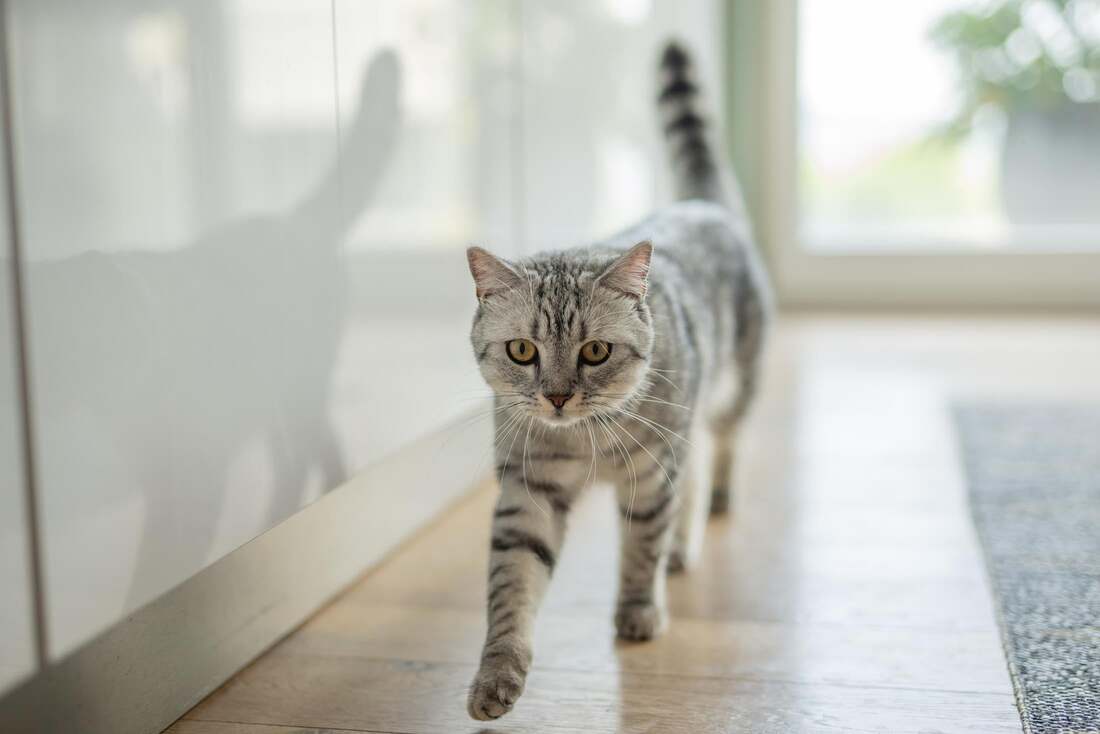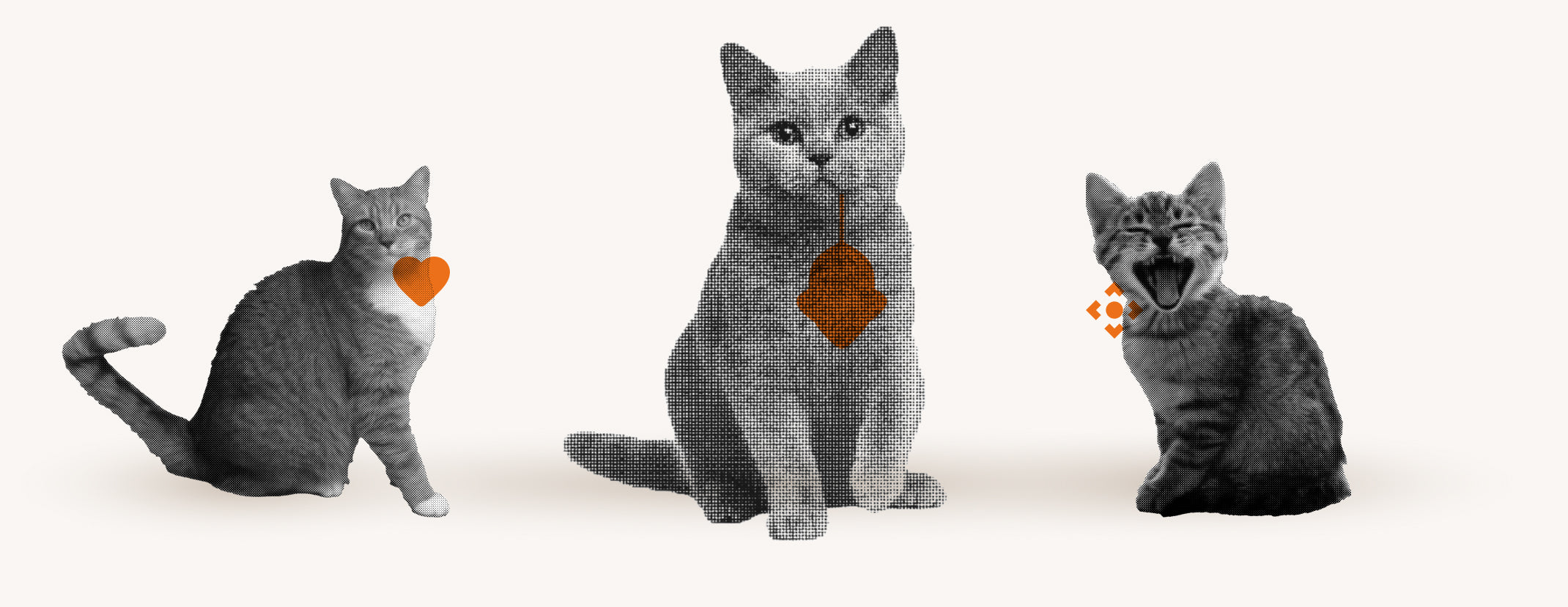Does your cat constantly have itching and skin problems?
These symptoms could indicate a food allergy, a common cause of discomfort in cats.
A food allergy occurs when the cat's immune system reacts hypersensitively to certain proteins in the food, which leads to itching and skin changes.
In this article, you will learn more about the causes, symptoms, diagnostic methods and treatment options for food allergies, as well as tips for prevention and distinguishing between allergies and intolerances.
Causes of Cat Food Allergy Itching

One of the main causes of itching and allergic reactions in cats is hypersensitivity to certain ingredients in their food. Cats are often allergic to certain protein sources such as beef, chicken or fish. These proteins are mistakenly recognized by the cat's immune system as harmful, leading to an allergic reaction. Carbohydrates such as wheat or corn can also trigger allergies. Interestingly, artificial additives such as colorings and preservatives can also cause allergic symptoms in some cats.
In addition to ingredients, genetic factors also play an important role in the development of food allergies. Some cats are genetically more prone to allergies from birth. This means that if there is a history of allergies in the family, the cat is more likely to develop a food allergy. In addition, the age of the cat can play a role, as the immune system can become more sensitive to allergens over time. So it is important to choose the composition of the food carefully and to watch for signs of allergy in the cat.
Symptoms of Cat Food Allergy

If your cat has a food allergy , you may notice several symptoms that indicate this condition. One of the most common signs is severe itching , especially around the face, ears, and neck. This itching often leads to your cat scratching or licking more frequently, which in turn can lead to skin changes. These skin changes include:
- redness and inflammation of the skin
- Scaly or bald patches
- crusting or open wounds
In addition to skin problems, digestive problems can also indicate a food allergy. The most common symptoms in the gastrointestinal tract include diarrhea , vomiting and flatulence . These symptoms can occur individually or in combination and are a clear sign that your cat may not be able to tolerate the food. It is important to pay attention to these symptoms and, if necessary, to see a veterinarian to determine the exact cause and have it treated.
Diagnosis of food allergies in cats
Diagnosing a food allergy in cats often begins with suspicion based on symptoms such as itching and skin irritation. A veterinarian will usually suggest an elimination diet to find out the exact cause of the allergy. This diet involves feeding the cat exclusively a food containing a single protein source and a single carbohydrate source that it has never eaten before for at least six weeks. This helps identify the specific allergens that are causing the reactions.
After the elimination diet, the challenge phase follows, in which the original food is gradually reintroduced to see if symptoms return. This step is crucial to confirm the diagnosis. If the cat reacts to the old food with symptoms again, this is a strong indication that certain ingredients in the food are causing the allergy. In some cases, a blood test may also be performed to identify specific antibodies to certain food ingredients, but the elimination diet is the most reliable method for diagnosing food allergies in cats.
Treatment Options for Cat Food Allergy
There are several options available when treating a cat food allergy. A common and effective method is to switch to a hypoallergenic cat food . These special diets contain proteins that have been processed so much that the cat's immune system no longer recognizes them as allergens. In addition, all feedings should be carefully monitored to ensure that the cat is receiving all the necessary nutrients and no longer showing symptoms.
In more severe cases or when a change in diet alone is not enough, medication may be necessary. These include:
- Antihistamines that help control allergic reactions,
- Corticoids , which can be used to reduce inflammation,
- Immunomodulators that influence the cat's immune system so that it reacts less sensitively to the allergens.
It is important that such treatments are always carried out in consultation with a veterinarian to ensure the health and well-being of the cat.
Prognosis for cats with food allergies
The long-term prognosis for cats with food allergies is generally positive as long as the allergy is managed properly. Once the allergen is identified and removed from the diet, many cats can live a symptom-free life . It is important to have regular check-ups with the vet to ensure that the cat continues to respond well to the diet and does not develop new allergies.
In the long term, food allergy in cats requires continuous monitoring and adjustment of feeding strategies. Important management strategies include:
- Strict adherence to the diagnosed diet without exceptions.
- Regularly review your diet to make sure it contains all the necessary nutrients.
- Observe the cat for new or recurring symptoms in order to respond quickly.
These measures will help ensure your cat’s well-being and a high quality of life.
Prevention of Food Allergies in Cats
To minimize the risk of food allergies in your cat, it is important to take preventative measures early on. One effective strategy is to introduce a rotation diet in which you regularly change the protein sources in the food. This prevents your cat from developing a hypersensitivity to a certain protein. You should also make sure that your cat's food is free of known allergens such as certain preservatives and colorings.
In addition to choosing the right cat food , you can take other steps to prevent allergies:
- Avoid giving your cat human foods, as these often contain ingredients that can cause allergies in cats.
- Pay attention to the origin of the food and prefer products that provide transparent information about their ingredients.
These measures will not only help reduce the risk of food allergies, but will also promote your cat's overall health and well-being.
Exclusion diet in case of suspected food allergy

If you suspect your cat has a food allergy, an elimination diet is an effective way to identify the ingredients that trigger the allergy. This involves feeding your cat only a specific type of food that it has never eaten before for a period of at least six to eight weeks. Ideally, this food should only contain one protein source and no additives. This controlled feeding process allows you to observe whether and how the symptoms change.
After this initial phase of the diet, when no more symptoms occur, the so-called provocation phase begins. In this phase, other ingredients or feed are gradually added to test whether the symptoms return. The following is important:
- Each new ingredient should be added individually.
- There should be a few days between the introduction of new ingredients.
- Pay close attention to your cat's reaction to identify specific triggers.
This process will help you understand exactly which components in the food are causing problems and should always be done under the supervision of a veterinarian.
Difference between allergy and intolerance
If your cat reacts to its food, it can be either an allergy or an intolerance. With an allergy, the cat's immune system reacts to certain ingredients in the food by viewing them as a threat and starting a defensive reaction. This can lead to symptoms such as skin rashes or itching. In contrast, an intolerance is not an immune reaction, but a difficulty of the digestive system in processing certain ingredients, which can lead to gastrointestinal problems.
It's important to know the difference because treatment varies depending on the cause of the reaction. If it's an allergy, the allergenic protein must be completely removed from the diet. If it's an intolerance, on the other hand, small adjustments in the amount or type of food can often help relieve symptoms. Here are some points to consider:
- Avoid known allergens in your cat's food if an allergy is present.
- If there is an intolerance, adjust the amount of food to facilitate digestion.
- Observe your cat closely and note any changes in behavior or well-being.
How Flappie can protect your cat from allergies
Flappie has developed a smart cat flap that prevents cats from coming home with prey items. This is especially important to minimise the risk of food allergies, as many prey items can carry allergens that trigger allergic reactions in cats.
Flappie 's innovative technology uses a camera and AI to detect if a cat is trying to come home with a prey item. If so, the flap stays closed and the cat cannot bring the potentially allergenic prey item into the house.
Frequently Asked Questions
Which cat food causes allergies?
Cats can be allergic to certain protein sources such as beef, chicken or fish. Carbohydrates such as wheat or corn as well as artificial additives such as colorings and preservatives can also trigger allergies.
How do you notice food allergies in cats?
Symptoms of a food allergy in cats include severe itching, especially in the face, ears and neck, as well as skin changes such as redness, scaling or crusting. Digestive problems such as diarrhea, vomiting and flatulence can also be signs of an allergy.
Can you be allergic to cat food?
Yes, cats can be allergic to ingredients in their food, especially certain proteins, carbohydrates or artificial additives.
How does a grain allergy manifest itself in cats?
A grain allergy in cats can manifest itself in skin problems such as itching, redness and flaking, as well as digestive problems such as diarrhea and vomiting.





Share:
Feeding cats without cat food: alternatives and tips